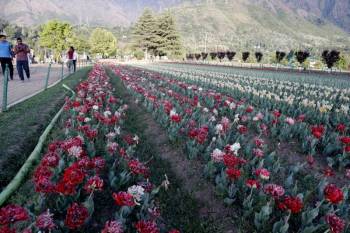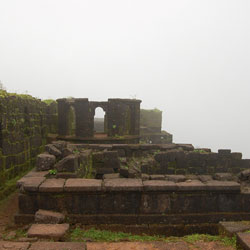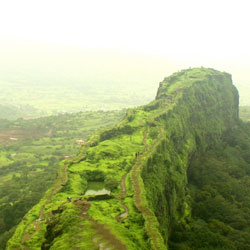Mt. Patalsu Peak Trek Tour
Duration : 5 Nights / 6 Days
Destination Covered : Manali, Solang Valley
Tour Activities : Camping, Trekking, Mountaineering
Tour Themes : Hill Stations & Valleys
11000
Per Person
Manali and Solang Valley Tour Overview
Manali :
At an altitude of 2,050 m (6,726 ft) in the Beas River Valley is a hill station nestled in the mountains of the Indian state of Himachal Pradesh near the northern end of the Kullu Valley. It is located about 270 km (168 mi) north of the state capital, Shimla. Manali lies in Kullu district of Himachal Pradesh state of India. It has become a tourist spot in recent years. Manali with a population of approx. 30,000 is administratively a part of the Kullu district. The small town is the beginning of an ancient trade route to Ladakh and from there over the Karakoram Pass on to Yarkand and Khotan in the Tarim Basin.
Geography :
Manali is located at 32.2396 N, 77.1887 E, about 40 km (25 mi) north of Kullu town. The town ranges in elevation from 1,800 m (5,900 ft) to 2,000 m (6,600 ft) in the uppermost “Old Manali” section.
Demographics :
Manali is a small town with a population originating from around India. As of 2001 India census,[1] Manali had an official population of 6,265. Males constituted 64% of the population and females 36%. Manali had an average literacy rate of 74%, higher than the national average of 59.5%: male literacy was 80%, and female literacy was 63%. 9% of the population was under six years of age.
Climate :
The climate in Manali is predominantly cold during winters, and moderately cool during summers. The temperatures range from 4 °C (39 °F) to 20 °C (68 °F) over the year. The average temperature during summer is between 04 °C (39 °F) and 15 °C (59 °F), and between −15 °C (5 °F) and 05 °C (41 °F) in the winter.
Monthly precipitation varies between 31 mm (1.2 in) in November to 217 mm (8.5 in) in July. In average, some 45 mm (1.8 in) of precipitation is received during winter and spring months, increasing to some 115 mm (4.5 in) in summer as the monsoon approaches. The average total annual precipitation is 1,363 mm (53.7 in). Snowfall often takes place between November end to early February. The weather in manali is not stable.
Etymology :
Vashishta Temple, Manali :
Manali is among top Indian skiing destinations. Manali is named after the Hindu lawgiver Manu. The word Manali is regarded as the changed name of “Manu-Alaya” which literally means “the abode of Manu”. Legend has it that sage Manu stepped off
his ark in Manali to recreate human life after a great flood had deluged the world. Manali is also often referred to as the “Valley of the Gods”. The Old Manali village has an ancient temple dedicated to sage Manu.
History :
In ancient times, the valley was sparsely populated by nomadic hunters known as ‘rakshas’. The next arrivals were the shepherds who arrived from the Kangra Valley and settled to take up agriculture. Some of the earliest inhabitants of the region are the ‘naur’ or ‘nar’, which is a caste unique to the Kullu valley. Only a few naur families are known to exist now. A naur family in the village Soyal near Haripur on the west bank of Manali was famous for the vast land they owned and their practice of having ‘rakshas’ as their labourers. The British introduced apple trees and trout, The first apple orchard was set up by Britishers near patlikulh which were earlier not native to Manali flora and fauna. It is said that when apple trees were first planted the fruits were so plentiful that often branches, unable to bear the weight, would collapse. To this day, apple—along with plum and pear—remains the best source of income for the majority of its inhabitants. Tourism in Manali received a boost after the rise of militancy in Kashmir in the late 1980s. This once quiet village was transformed into a bustling town with many hotels and restaurants.
Beas Kund trek is one of the most popular and beautiful trek in Kullu Valley. Beas Kund is a holy lake where Rishi Vyas took his daily bath. River Beas originates from here. Solang Nalla base camp is 13 km from Manali and 1 hour drive, a popular place for tourists for ski slopes, Para Gliding etc. Dhundhi camp gives first glimpse of Mt. Hanuman Tibba and Seven Sisters. Beas Kund area might be full of snow at the time of this trek. This is enjoyable and easy going trek for any age group.
Manali and Solang Valley Tour Itinerary
Upon arrival in Manali, The pretty hilly town of Manali has an altitude of around 6730 feet, and it is a popular summer as well as winter destination. Deodar forests on the hills, the Beas River flowing through the town, and snow-clad mountains in the distance give it a mesmerizing look. The region experiences cool and pleasant weather conditions for the most part of the year.
Manali to Drive Shikharpar Ultimate Stay – Feel like a home – (4 Km. from Manali)
B/ Fast
Room Allotment
Introduction – Mountain Do’s and Don’t’s
Group Activity
Lunch
Acclimatization trek to – Jogini Water Fall‖
High Tea & Snacks
Group Discussions
Evening Hot Soup
Dinner and Lights off
B/ Fast (After B/Fast move to Solang Nallah)
Lunch at Campsite – Solang Nallah
Tent Allotment ( 4 People in 1 Tent ) & Rest
Group Activity or Visit to Solang Nallah Ground to Enjoy Paragliding (at your own cost)
High Tea & Snacks
Late Evening Hot Soup
Group Discussions and Brief for 2morow
Dinner and Lights off
This section of Patalsu Peak trekking will transport you to the beautiful meadow of Shaga dugh. You will meander through mixed forests of oak and pine, and as you reach higher altitudes, you will see giant slopes of the Solang Valley. Here the pine and oak vegetation will be taken over by groves of deodar, and white mountains will be visible in the distance. You will continue hiking through the valley, and pass the village of Solang. After a long and gruelling climb, you will reach Shaga dugh. Shaga dugh is a lush alpine grassland where you will stay overnight in Tent
B/ Fast (After B/Fast move to Shaga Dugh)
Lunch at Campsite – Shaga Dugh
Tent Allotment ( 4 People in 1 Tent ) & Rest
Group Activity
High Tea & Snacks
Late Evening Hot Soup
Group Discussions and Brief for 2morow
Dinner and Lights off
Prepare yourselves for the Beautiful section of Patalsu Peak. The first hour of the walk will be through a mixed forest of conifers and oak. After this section is over, you will have scaled a substantial height, and the trees will disappear altogether. The rest of the trail is exposed, rocky and relatively unmarked. After about 4 hours of hiking, you will conquer the Patalsu Peak, which is roughly 13845 feet high. The journey will give you magnificent views of many snowbound peaks of the Dhauladhar and Great Himalayan ranges. Later in the day, start descending and retrace the path to the Shagadugh campsite
B/ Fast (After B/Fast move to Shaga Dugh)
Packed Lunch for Summit Days
High Tea & Snacks
Late Evening Hot Soup
Group Discussions and Brief for 2morow
Dinner and Lights off
Start your journey to Solang Nallah from Shaga dugh early in the morning. At Solang Nalla, board a vehicle and drive back to .
B/ Fast (After B/Fast move to Burwa)
Lunch at Camp Site
Rest and Free for Local Sight Seeing
Late Evening Hot Soup Group Discussions
Dinner and Lights off
B/Fast
Feedback Session and Vote of Thanks
After that we will leave from Base to Manali, From Manali, you can take buses to Chandigadh or Delhi
Event Fee:
Package Price Rs. 11,000/- ( Rs. Eleven Thousand Only ) – (Manali to Manali)
Age Group: 16 Yrs. To upto Medically / Mentally / Physically fit
More Details about Manali and Solang Valley Tour
Inclusions
- AP (Room + Breakfast + Lunch + Dinner)
- The cost per head includes the following.
- Manali to Manali Transfers
- Food and Accommodation ( 4 People in 1 Room and 4 People in 1 Tent )
- Girls and Boys Separate Accommodation
- High Altitude Gear : Ice Axe — Ice Shoes Walking Stick – Rope
- Guide / Cook and other Professionals
Exclusions
- Any Expenses of Personal nature such as Travel and medical insurance, Drinks, Laundry,
- Telephone/Fax, Calls, Additional Porterage or transportations,
- Any additional Expenses caused by reason beyond our control such as Natural Calamities
- ( Land Slides, Floods etc. ), any accidents, medical evacuations, riots, strikes, evacuation costs Etc.
- Any tips, and any meals apart from the ones mentioned above.
- Any other tax or service charge, stay charge that could be enforced during this period will be Extra and need to be borne by you.
- Any service not specifically mentioned in the Includes sections.
- “Shikhar Par” Manali, Himachal Pradesh, will have all authority to make any changes and final Decision.
- Please Note: All programs are subject to change without prior notice. Smoking and Any Kind of Alcohol Drinks not allowed During Program
Payments Terms
- * 20% Advance Percentage of total booking amount
Price & Rates
| No of pax | Age Limit | Price per pax (Rs) |
|---|---|---|
| No of pax Adult | Age Limit Above 12 years | Price per pax (Rs) INR 11000 / Adult ( With Tax ) |
Insurance
- All travelers are advised to purchase travel insurance that provide care and services for sickness,
- Accidents, emergency rescue, ted. Related to international travel. – Organisers shall not be responsible for the loss of personal assets and belongings of the travelers due to
- unavoidable reason or mishap.
Caution & Remarks
- Even though participants do not need to submit any health certificates those with a history Of medical problems, particularly cardiac or respiratory, should consult a doctor before Deciding to undertake the trip.
- Carry appropriate substitution drugs for individuals allergic to any of above
- Avoid medication such as sleeping tablets, sedatives, strong painkillers, and anti histamines Which depress the respiration and increase the risk of (AMS-Active Mountain Sickness) Especially while sleeping
Cancellations
- If for some reason you wish to cancel your trek, an email intimation needs to be sent to contact@mumbaipuneadventures.com. Cancellation requests are not taken over the phone. However, you can phone to check whether your cancellation has been processed.
- The cancellation charges are as under:
- Cancellations prior to 90 days from the start of the trek – full refund.
- Cancellation between 89 days and 40 days to the start of the trek – 50% refund.
- Cancellation less than 39 days to the start of the trek – no refund.
- Note: If a trek is called off at the last moment due to a natural calamity / unforeseen circumstances (like rains, earthquake, landslides, strike/bandh etc), Shikha
- Drop out during trek: If for some reason a participant drop out from the trek on any day then will make arrangements for his/ her return up to Manali. A staff will accompany the participant to the Manali. Manali transportation and stay cost at any location including Manali has to be borne by the participant only.
Things to carry
- Sun protection & Cold Cream (Sunscreen/Lip balm/Sunglasses)
- Insulation (Jacket/ Personal Clothing’s/ Fleece Gloves/ Hat or Cap)
- Illumination (Headlamp or flashlight (Plus spare – Extra batteries)
- Personal First-aid Kit.
- Energy Food
- Hydration Bag or Water Bottle
- Bandana or Buff
- Rainwear (jacket, pants) (Depend on Weather)
- Boots or Shoes suited to terrain
- Socks plus spares
- Sandals
- Camera and memory cards – Optional
- Binoculars – Optional
- Notebook and pen or pencil
- Credit/Debit card; small amount of cash
- Earplugs and eye shade – UV Protected or Cat 4
- Toilet paper
- Insect repellant
- Toothbrush and/or toiletry kit
- Towel
- Cell phone with Charger,
- Poncho
- Personal Clothing (T.Shirts/Lowers/Under Garments etc.)
- Thermal Inners
Cancellation & Refund Policy
- * Upon cancellation, refund will be made after deducting the Retention Amount.
Packages by Theme

















